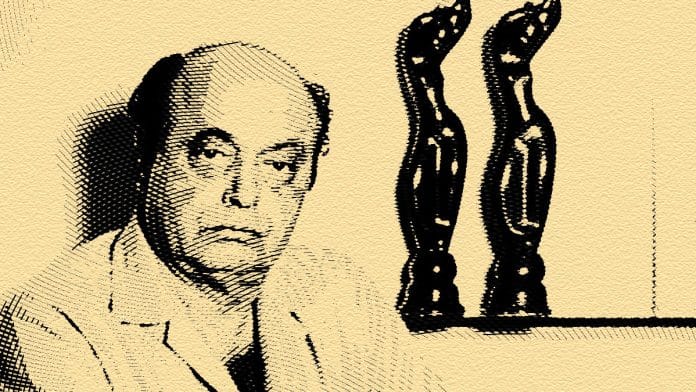Many of those who grew up in India in the late 1980s have one thing in common — their memory of Sunday mornings. It would be a day when everyone — friends, family, neighbours and even strangers — would gather around the television to watch Ramayana on Doordarshan.
It was a show that actually brought together people from all walks of life and gave them a common ground. And the man behind the most successful Indian TV show was director Ramanand Sagar.
Born Chandramauli Chopra on 29 December 1917 into Bollywood royalty, the Chopra household, Sagar took to literature early on in life. The earliest record of his work is 1933 piece called Pritam Pariksha, which he wrote for Srinagar’s Sri Pratap college’s magazine. The story goes that the editor was so impressed, he did not actually believe it was Sagar’s original work and said so in a disclaimer under the article.
A rift in the family led to Sagar having to fend for himself while he was studying in Lahore’s University of Punjab in undivided India. He was a peon, a salesman, a cleaner and more. He graduated with a gold medal in Persian and Sanskrit, along with the title of ‘Munshi Fazal’.
Life became a little better after college, as he took up journalism and writing full time. He reported for the Daily Milap and quickly rose to editorship. On the side, he would write and publish prose and poetry under various nom de plumes like Ramanand Chopra, Ramanand Bedi, and Ramanand Kashmiri.
In the 1940s, he took the literary world in undivided Punjab by storm with works like Jwaar Bhaata, Ainey, Jab Pehle Roz Barf Gire, and more — all of which centred around the human suffering that he witnessed during the Independence movement and Partition.
In 1949, Sagar moved to Mumbai for a new beginning after Partition. Haunted by the atrocities he experienced, Sagar channelled those into writing and produced his most famous book — Aur Insaan Mar Gaya. It was translated many times over from Urdu to Hindi, English and other regional languages.
Also read: Ravi Chopra — the man behind the Mahabharat and Baghban
Bollywood calling
While he had had brushes with the filmmaking world — he worked on the sets of the 1936 silent film Raiders of the Rail Road — Sagar hadn’t really considered films till he moved to Mumbai. In hindsight, his foray into the Hindi film industry was indicative of the kind of career he would have because his debut was as a writer of the 1949 film, Barsaat. Directed by Raj Kapoor, the romantic film did exceptionally well at the box office and actually helped launch Kapoor into superstardom.
In 1950, he set up his own production company, Sagar Arts. While the first few films did moderately well, it was not until 1959’s Paigham that things became seriously big.
The Dilip Kumar and Vyjayantimala-starrer won him his first Filmfare award for Best Dialogue. Thus began a string of box office successes: Ghunghat (1960), Zindagi (1964), Arzoo (1965), Aankhen (1968), Geet (1970), Lalkaar (1972) and Charas (1978).
Ramayana and the golden age of TV
In the 1980s, Sagar turned his attention to television — which, at that point in time, was Doordarshan. He was one of the first filmmakers to create new content for the quickly growing Indian audience. His first show, Vikram aur Betaal, was shot with his son, Prem Sagar, in 1985. After its success, he was handed the task of creating another show — Ramayana.
Between 1987 and 1988, Sagar directed one of the most successful Indian TV shows. Over 78 weeks, once a week, for 45 minutes, everyone would gather and watch the story of Rama and Sita. As the popularity of the show shot up, there were concerns that it had very strong undercurrents of Hindutva, and was alienating other communities in the country. But Sagar stuck to his guns and continued his television masterpiece. The show even held a place in the Limca Book of Records for the World’s Most Viewed Mythological TV Series until 2003.
Sagar followed Ramayana with similar Hindu mythological series such as Luv Kush and Krishna, but nothing came close to the success of the former.
Over the span of three decades, Sagar wrote, directed, and produced 30-odd films, six TV shows, numerous plays, novels, and verses. He was awarded a Padma Shri in 2000. Sagar passed away on 12 December 2005, following health complications. While there are many who will debate his works, one thing is for sure — few have been able to captivate an entire country like him.
Also read: BJP seeks nationwide ban on Colors TV’s serial ‘Ram Siya Ke Luv Kush’






